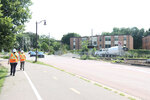
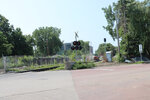

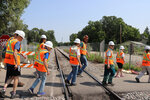
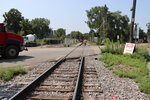

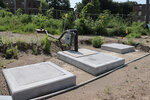

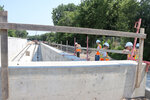
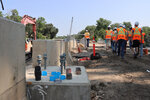
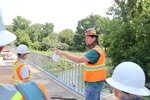
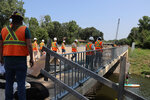
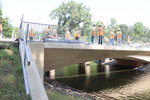
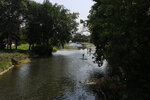
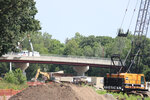
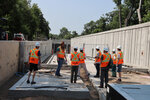

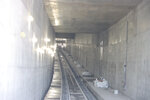
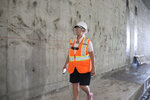

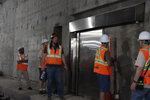
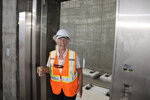
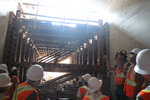
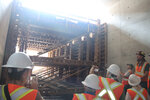
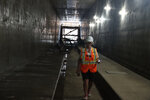
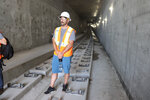
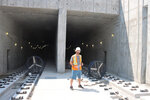
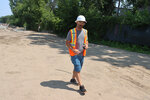
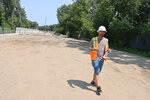
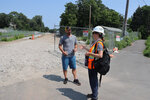
The Kenilworth Tunnel is expected to be complete in the first quarter of 2025. On July 31, 2024, Met Transit reached a major milestone when the lowest element of the tunnel was done.
In September, the freight rails will be moved a few feet into their final position from the temporary location they are in now. This means Cedar Lake Parkway will be torn up one more time.
Utility work will be completed, and final sidewalk and road facilities will be constructed then.
Around-the-clock work will begin on Sept. 10 and continue throughout the night and into Sept. 11 to reposition the freight track. This work is being coordinated as part of a larger freight rail track outage window.
The utility, road and sidewalk work will be done during normal construction hours of Monday to Friday 7 a.m. to 6 p.m. through November.
The tunnel on the east side of Cedar Lake south of Kenilworth Channel runs northeast of West Lake Street, passes underneath Cedar Lake Parkway, and returns at-grade approximately 400 feet south of the Cedar Lake Channel (Kenilworth Channel). Poor soils discovered after work began led to a halt in construction, long delays, increased costs and a renegotiated contract with the builders. Large rocks were found deep underground in the area’s sandy outwash soil, something none of the experts predicted. A slow “press-in piler” was used to construct tunnel walls instead of pile driving per neighbor requests.
The tracks will be functional in 2025, and rail service will begin in 2027 after testing has been complete.
The transit tunnel at the Minneapolis-St. Paul is three miles long, and the Kenilworth Tunnel is 1.5 miles long. It will take less than 2 minutes to get through the tunnel traveling in a train at 35 miles an hour.
“The tunnel is the most gnarly part of the project,” said Kaydee Kirk, Met Transit Green Line Extension Project Community Outreach Coordinator.
“Working so closely with the railroad presents a lot of challenges,” observed Sean Streck during a tour of the site on July 31, 2024. He’s a project engineer who is the Assistant Council-Authorized Representative (ACAR) for tunnel construction. Twin Cities & Western Railroad (TC&W) had initially agreed to move its operations out of this narrow corridor but then didn’t.
Ground settling caused issues earlier in the project. “It was pretty challenging to build,” said Streck. “Once we started building the tunnel, we have been pretty much on schedule. It was all the other challenges around the tunnel that caused the problems.”
The tunnel used 70,000 cubic yards of concrete tailored to be underwater.
Sprinklers will go off if there is a fire in the tunnel, and there are fire safety doors every 1,000 feet.
A lift station moves water 70 feet up and out of the tunnel, which must be dry when complete to meet the construction specifications. The water then goes through a grit filtration system and then enters the city’s stormwater tunnels.
As of the end of July, there was 600 feet left to build on the tunnel. Construction is being done on both ends and workers will meet in the middle to complete it. They do 2-3% of the work each month. “The day the keystone is poured for the tunnel will be a day of celebration,” stated Streck.
At the work peak, there were 100 workers on site, and now there are about 30. With the mild winter last year, they accomplished a lot. “We lost more days to rain than we did to snow,” stated Streck, who like most project workers resides in the Twin Cities area. He’s in Hopkins. “It’s keeping a lot of people busy.”
“It’s very much an economic development tool,” stated Kirk. She pointed to $2 million in infrastructure improvements along the line that have already been done.
BIKE TRAIL IS MISSING PIECE FOR RESIDENT
Matt Gawronski’s back yard is adjacent to the tunnel. He moved there in 2009, drawn by the bike trail, and is eager to see it reopened.
“That’s the biggest missing piece for me,” said Gawronski.
A 1999 Southwest High School graduate, he moved back from Colorado to Minneapolis and opted to buy a house next to the proposed Green Line Extension. He works from home and admits that the construction noise was frustrating some days. “I’ve been here 14 years and it’s been under construction the whole time,” he said. The neighborhood was divided on the project and “it was traumatic,” he acknowledged. One group of neighbors sued to stop construction, alleging an improper route selection process. But he believes that transit projects like this are “the right thing to do,” pointing to New York, Washington, DC, and Chicago’s transit systems.
“My biggest goal out of the project is that they do it right,” stated Gawronski.
He plans to build a fire pit along the new line and open his yard up once the work is done.
Comments
No comments on this item Please log in to comment by clicking here